Illustrations by Thomas T. Yamashita, Ph.D.
Adapted from an article originally published in Quantum Yield, a Technical Publication of the Sunburst Disease Clinic
In recent years, our agricultural community has been subjected to an unprecedented barrage of temperature fluctuations, rains, hail, snow, wind and variations thereof. This has transformed our farms into large scale plant disease laboratories.
While many growers have seen photographs of specific disease symptoms, most will admit that the distinctions in visible symptoms between most diseases are subtle, and indeed appear identical to many. And this has been the case for centuries.
Anton van Leeuwenhoek (1632-1723), a dry goods merchant from Delft, Holland, had what most would consider to be a peculiar hobby: lens grinding, and the crafting and use of microscopes. But his primordial microscopes, however basic, blazed the path for our understanding of the microbial world.
With the use of today’s sophisticated microscopes, we can begin to appreciate the science of microbiology and gain insight into distinct morphological variations between the many plant pathogens. With minimal verbiage, this article is devoted to sharing our microscopic observations of common fungal pathogens and characteristics relevant to agricultural science.
Ceratocystis Canker
Caused by: Ceratocystis fimbriata
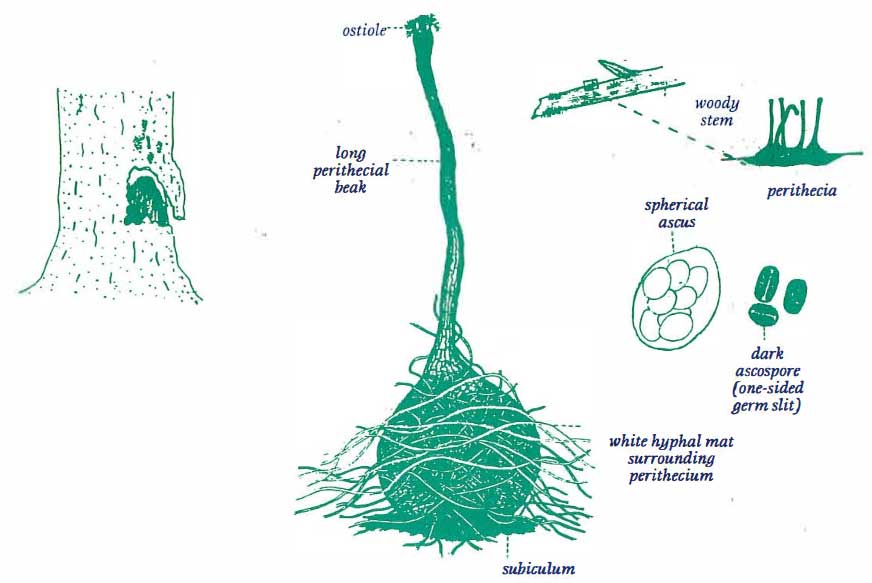
Survives as mycelia in perennial cankers and as fruiting bodies in infected wounds. Commonly spread by arthropods. Can be controlled through sanitation, as well as the use of fungicides, such as Benlate, Bravo, Captan, Copper, and Dithane.
Anthracnose
Caused by: Colletotrichum acutatum and Colletotrichum gloeosporioides
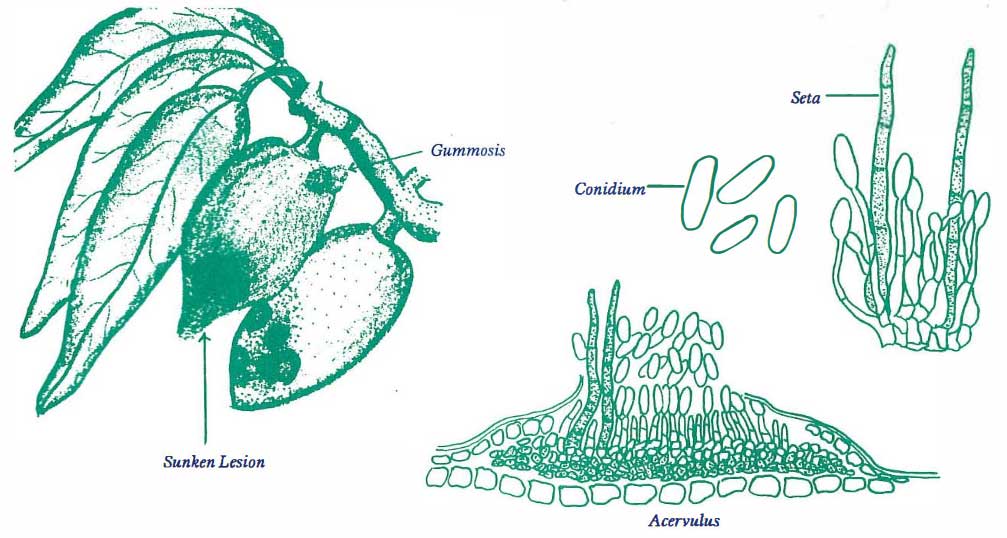
The fungi responsible for anthracnose can survive on an immense number of species—more than 350 in total. C. acutatum and C. gloeosporioides survive on infected fruit, nuts, and branches. The spores are spread by rain, flying insects, and birds. These fungi prefer a moderately warm environment between 65 and 86 degrees Fahrenheit. Ideal germination conditions occur after a period of 48 hours of wetting, with temperatures around 68 degrees Fahrenheit. Anthracnose can be controlled through sanitation, sound nutrition, and the use of fungicides, such as Abound, Benlate, Bravo, Dithane, Copper, Maneb, Rally, and Topsin.
Scab
Caused by: Cladosporium carpophilum
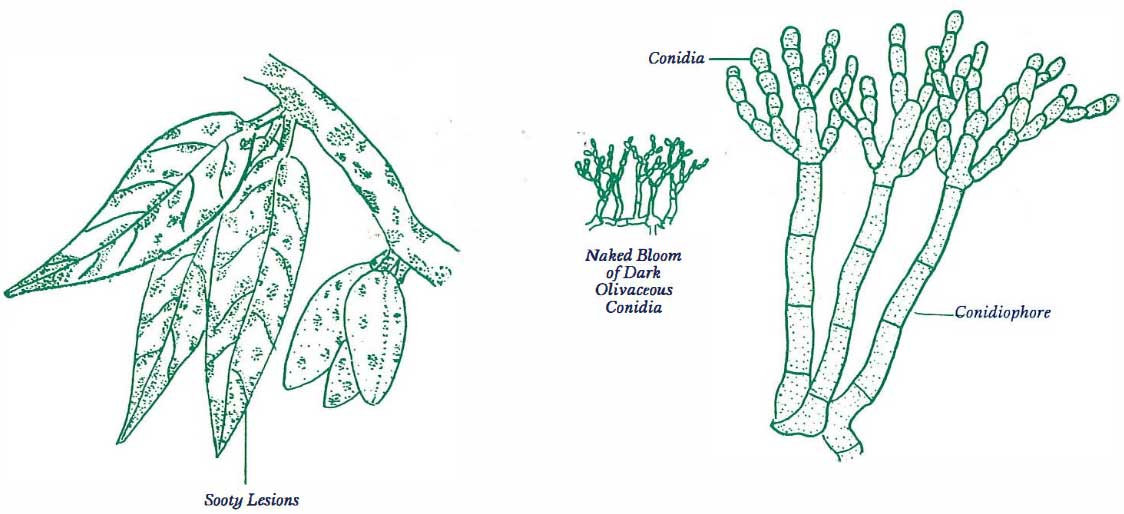
C. carpophilum survives as mycelia in twigs and as chlamydospores on the surface of tissues. The fungus has a broad host range in climates with temperatures between 55 and 86 degrees, and its spores germinate at 94+ percent humidity. The fungus can be controlled with common fungicides, such as Abound, Benlate, Bravo, Captan, Dithane, Copper, Maneb, Procure, Rally, and Topsin.
Powdery Mildew of Peach
Caused by: Sphaerotheca pannosa
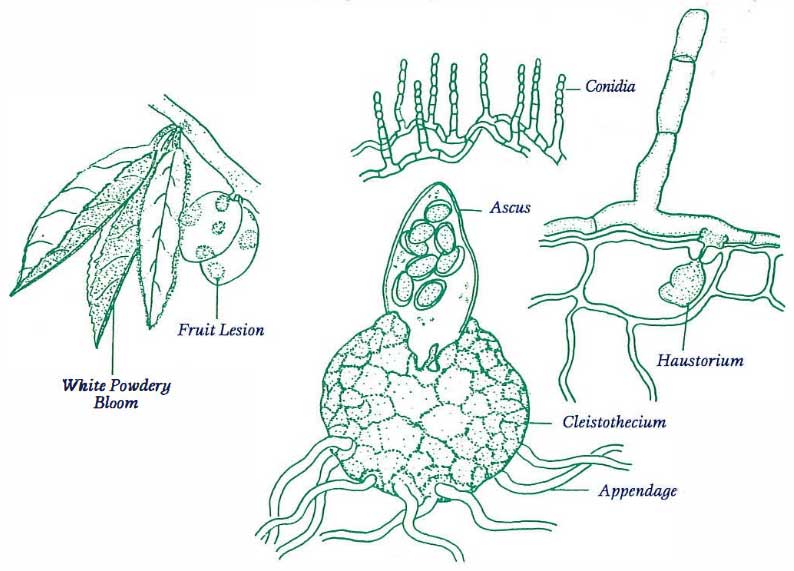
The fungus responsible for powdery mildew of peach infects trees as mycelia within the inner bud scales, or in dormant infected roses. The fungus prefers temperature ranges of 36 to 99 degrees Fahrenheit, and a relative humidity of greater than 80%. Spores are typically transported via wind currents. S. pannosa can be controlled with fungicides, such as Abound, Bayleton, Benlate, Bravo, Captain, Copper, Elite, Microthiol, Procure, Rally, Rubigan, Terranil, Topsin, and Ziram.
Shot Hole
Caused by: Wilsonomyces carpophilus
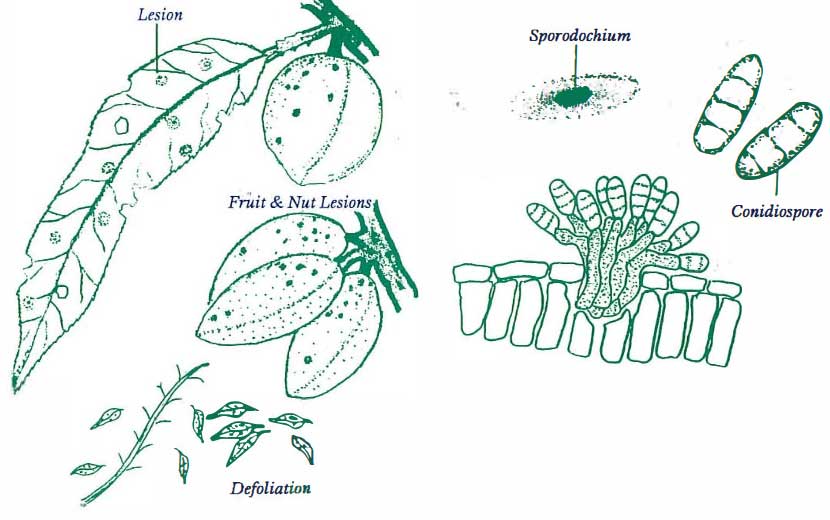
W. carpophilus survives on twig lesions, unaborted leaves, and within bud scales, preferring a temperature range of 39 to 86 degrees. The fungus germinates on leaves after 8 hours of wetness, and on twigs after 24 hours of wetness, at a temperature of approximately 68 degrees. The fungi responsible for shot hole can be treated with such fungicides as Bravo, Captan, Copper, Dithane, Maneb, Rally and Ziram.
Jacket Rot or Green Fruit Rot
Caused by: Botrytis cinerea
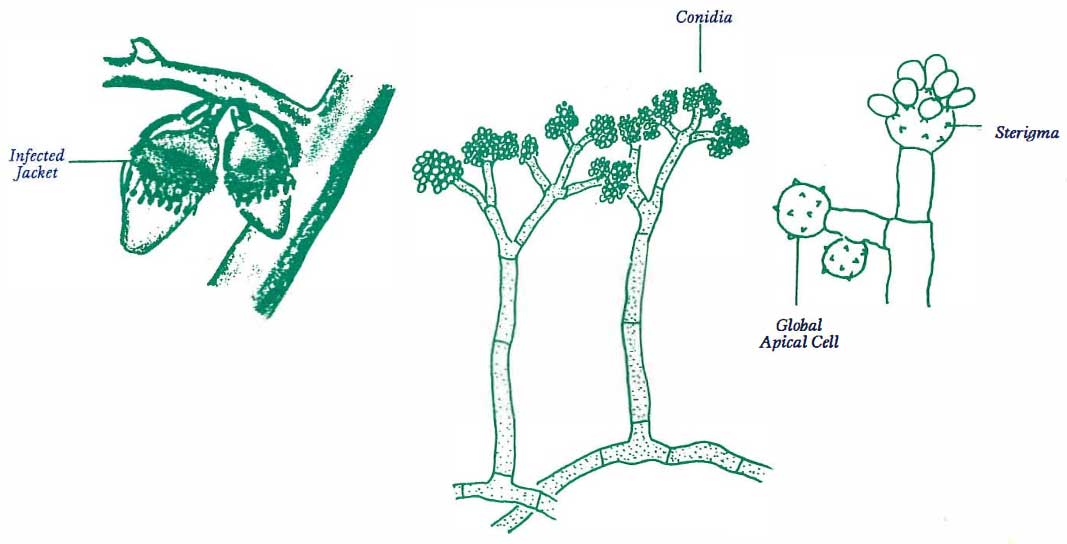
B. cinerea is almost universally ubiquitous, surviving as sclerotia on undecomposed debris and blighted flower parts. This fungus prefers environments temperatures in the 45 to 86 degree Fahrenheit range, germinating after 8 hours of wetness in temperatures of approximately 68 degrees F. It can be treated with fungicides including Benlate, Botran, Bravo, Captan, Copper, Ronilan, Rovral, Terranil, and Topsin.
Brown Rot
Caused by: Monilinia fructicola and Monilinia laxa
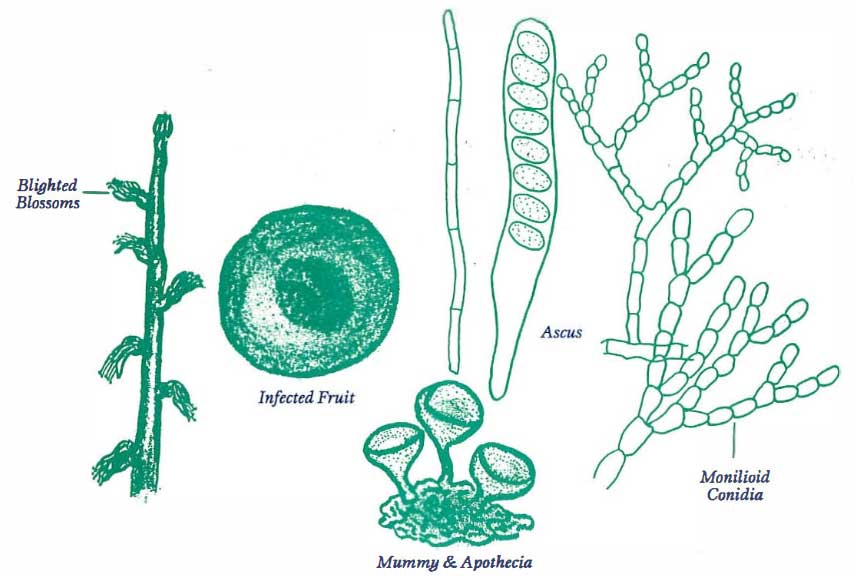
M. fructicola and M. laxa survive on mummies, stems, blighted blossoms, twigs, and cankers. They prefer environments in the 41 to 86 degree Fahrenheit range, and spores germinate after 3 to 5 hours of wetting at 68 degrees F. These fungi can be controlled through sanitation measures, as well as applications of such fungicides as Benlate, Bravo, Break, Captan, Copper, Elite, Maneb, Microthiol, Rally, Ronilan, Rovral, Topsin, and Ziram.
Peach Leaf Curl
Caused by: Taphrina deformans
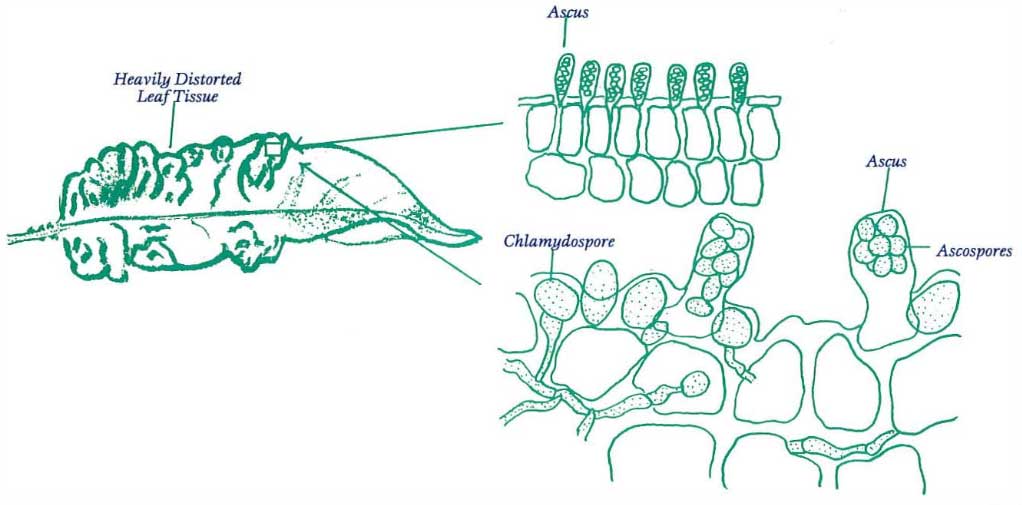
T. deformans is spread by wind currents, and survives on infected leaves and shoots, and in buds and bud scales. It thrives in environments with temperatures between 48 and 86 degrees Fahrenheit, and 95+ percent relative humidity. It can be controlled with fungicides, including Bravo, Captan, Copper, Sylit, Terranil, and Ziram.
Phytophthora Crown and Root Rot
Caused by: Phytophthora spp.
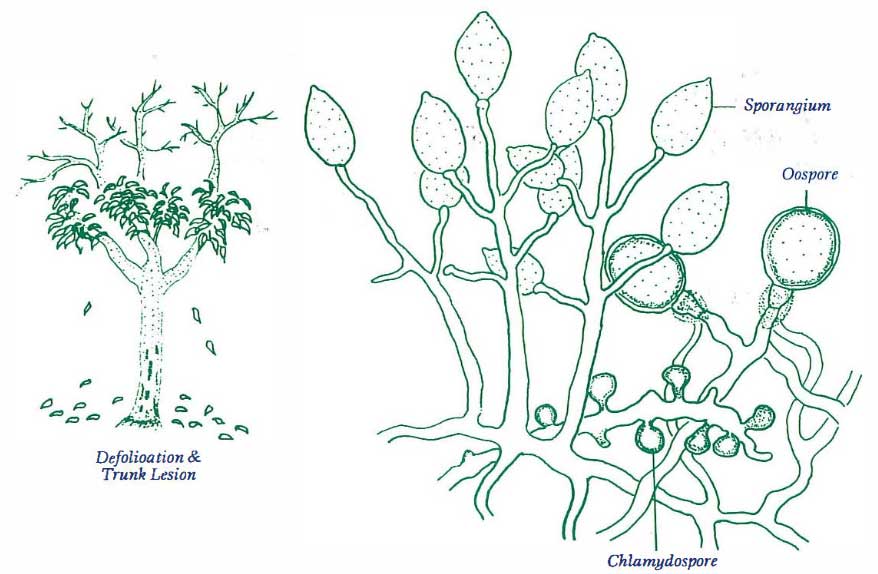
Phytophthora survives on infected plants, soil, and water, and can be wind-borne. It prefers moist soils and temperatures in the 45 to 85 degree range. Phytophthora can be controlled for with resistant rootstocks, such as Myrobalan plum, Marianna 2624, Mazzard cherry, Stockton Morello, Colt, and Paradox. Fungicides such as Aliette and Ridomil can also be helpful.
Rust of Peach Trees
Caused by: Tranzschelia discolor
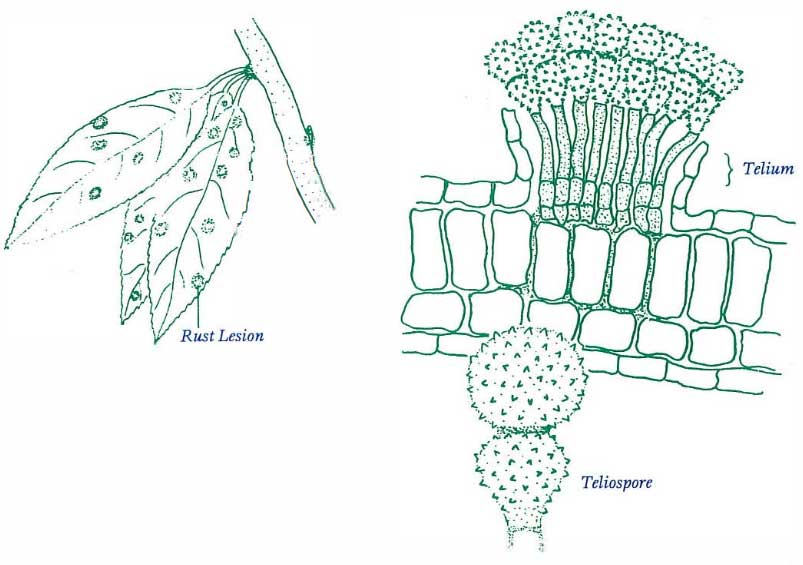
T. discolor survives as urediniospores on twigs and non-abscised leaves, and as mycelia in twigs. It prefers temperatures between 46 and 100 degrees, germinating after 18 hours of wetness at temperatures of approximately 68 degrees. It can be controlled with fungicides, such as Benlate, Bravo, Captan, Copper, Dithane, Maneb, Microthiol, Rally, Sulfur, Topsin, and Ziram.
Heart Rot or Wood Rot
Caused by Antrodia albida
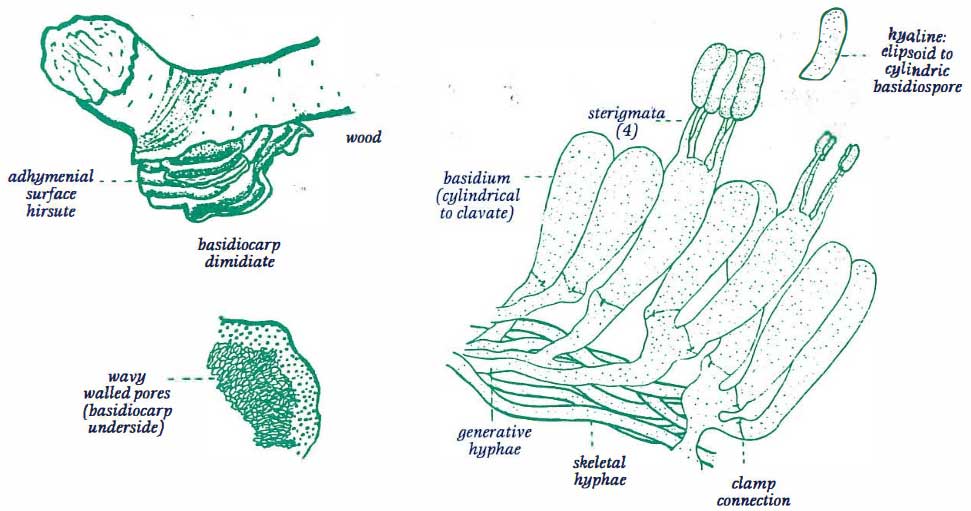
A. albida is spread by wind and survives on infected wood as mycelia or fruiting bodies, where it enters plants via wounds caused by previous infections. It germinates after 12 to 16 hours of wetness in temperatures of approximately 68 degrees. It can be controlled by adopting measures which minimize the potential for surface wounds to trees. Wounds can be treated topically with protective fungicides, such as Bravo, Captan, Copper, and Dithane.

